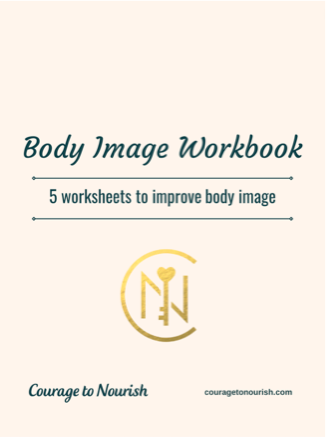This blog was written by Bobbi Boteler.
Being a mental health provider requires a special kind of person with a helping heart. That being said, there are going to be times when a clinician unknowingly does harm to a client. In fact, this happens quite often with clients suffering with an eating disorder. Read on to understand how to speak to a client with an eating disorder.
It is important to get your own supervision and training on how to speak to a client with an eating disorder. Something that is meant to be said out of support can often end up causing more harm and stress to our clients.
Below are a few scenarios that often come up in sessions between a client struggling with an eating disorder and their clinician. It is critical for us to recognize how these can cause emotional distress to our clients. When we become more familiar with how to speak to a client with an eating disorder, we can better support them.
Scenario #1
Often times as our clients become healthier in their recovery journey, our inclination is to tell them how much better they are looking. Comments around their changing appearance, even if it is meant to be positive, are often times triggering.
Avoid commenting on your client’s body size or appearance, even if you are trying to be positive.
It is better to recognize positive changes you are seeing in them as a whole. Try saying, “It is really good to see you laughing more and engaging in your life now!”
Scenario #2
Clinicians can be impacted by diet culture. Just as our clients are. Every clinician has their own relationship with food. What they may think is working for them is often times not what is best for their clients.
Avoid sharing your own beliefs, opinions and experiences around food. Especially if it involves cutting out certain food groups, moralizing or criticizing types of food, or giving nutrition advice.
Stay away from comments such as “I gave up gluten last year and I feel so much better!” or “I am trying to limit my junk food right now. I ate way too much during COVID.”
Typically, it is best to limit self-disclosing around food with our clients unless you are sharing about a positive experience. For instance, trying out a new restaurant or enjoying a dessert with a friend.
Scenario #3
Another common theme that comes up with clinicians supporting their clients in recovery is discussing what their healthy, recovered bodies will look like. As a clinician, it is not our job to make promises about what will, or will not, happen to their bodies. For many of our clients, weight gain is a huge fear.
Avoid saying “Don’t worry, you won’t get fat” or “You won’t gain too much weight”. Instead try validating their fears around their changing body. “It must be really scary to not know how your body may change during recovery. Let’s keep focusing on taking care of your current body and trusting that the farther along you move in recovery, the less important the size of your body will hopefully be to you, and the more important living out your actual life will be.”
Scenario #4
We often say that eating disorders are about the food. In reality, they are more often not about the food itself. Instead, our clients often develop an eating disorder to help them cope with the world around them in what feels like a more manageable way.
Avoid focusing too much on the actual eating disorder behaviors themselves as the problem to be fixed. Bringing it back to the emotions your client is experiencing is crucial to healing.
Instead of, “You really need to eat your lunch”, try saying, “It seems like lunch has been hard lately. What is happening around that time that is making it hard to eat?”
Scenario #5
It is important to remember that eating disorders do not have a “look”. For example, your client may be suffering with a crippling eating disorder and be living in a larger body. It is common for our clients to continually feel that they are “not sick enough”. Or that they don’t “appear” to others to have an eating disorder.
Avoid insinuating that your client doesn’t look like they have an eating disorder. Eating disorders do not discriminate based on body size, gender, age, race or sexual orientation.
Becoming more aware of how to speak to a client with an eating disorder is extremely important. It has the power to positively change the course of their treatment and recovery. As a clinician, take the time to incorporate these skills into your practice.
Check out our Eating Disorder Resources for Providers page on our website. Contact us if you have a question about a client or would like to refer to us. Also, sign up for our client or clinician newsletter!
Courage to Nourish is a group of eating disorder specialized dietitians. We have in person locations in Alexandria, Virginia, Columbia, Maryland. and College Park, Maryland. We offer virtual services across the state of Virginia, Washington DC, Pennsylvania, and Colorado. We offer individual nutrition therapy. As well as support groups. We would love to guide you in building a better relationship with food.
Contact us for more information. And to schedule a discovery call. Also, sign up for our client or clinician newsletter!
Take one of our eating disorder quizzes:
- Binge Eating Disorder Quiz
- Anorexia Quiz
- Bulimia Quiz
- ARFID Quiz
- Body Image Quiz
- Disordered Eating Quiz
- Chronic Dieting Quiz
- PCOS Quiz
- Orthorexia Quiz
- Compulsive Exercise Quiz
- RED-S Quiz


